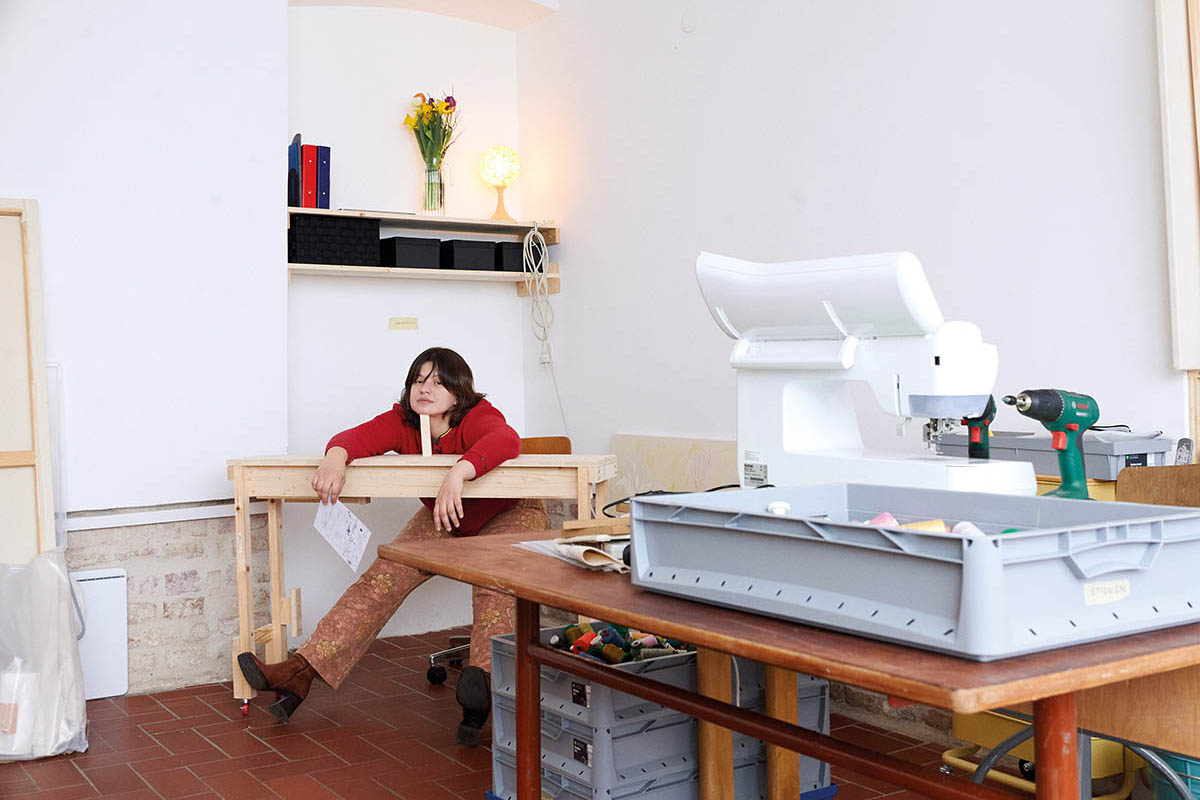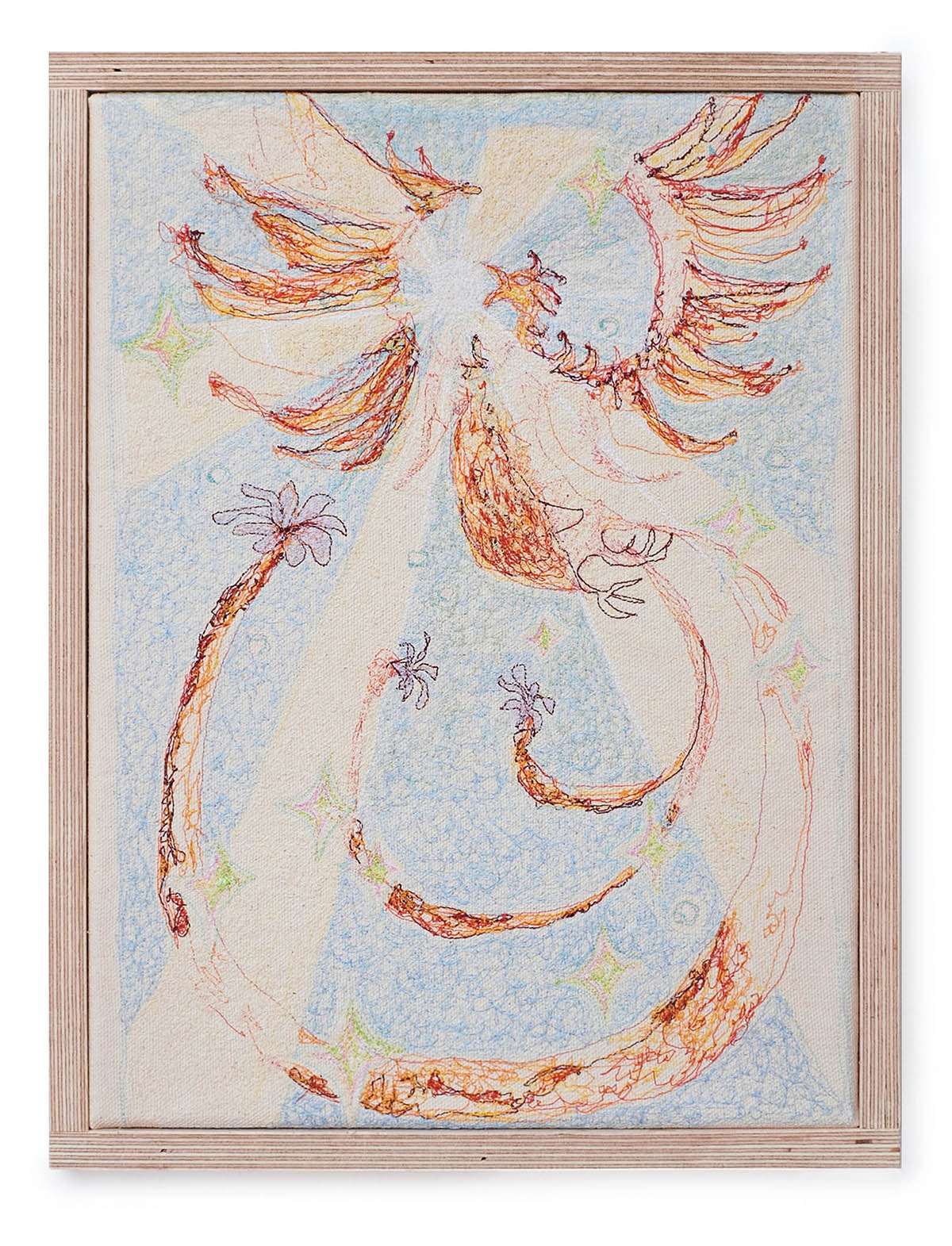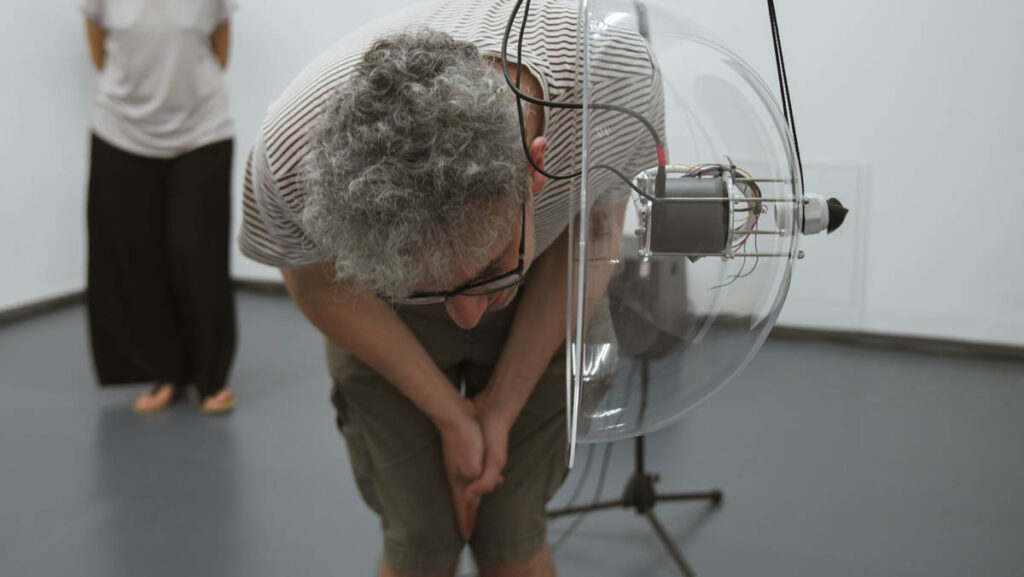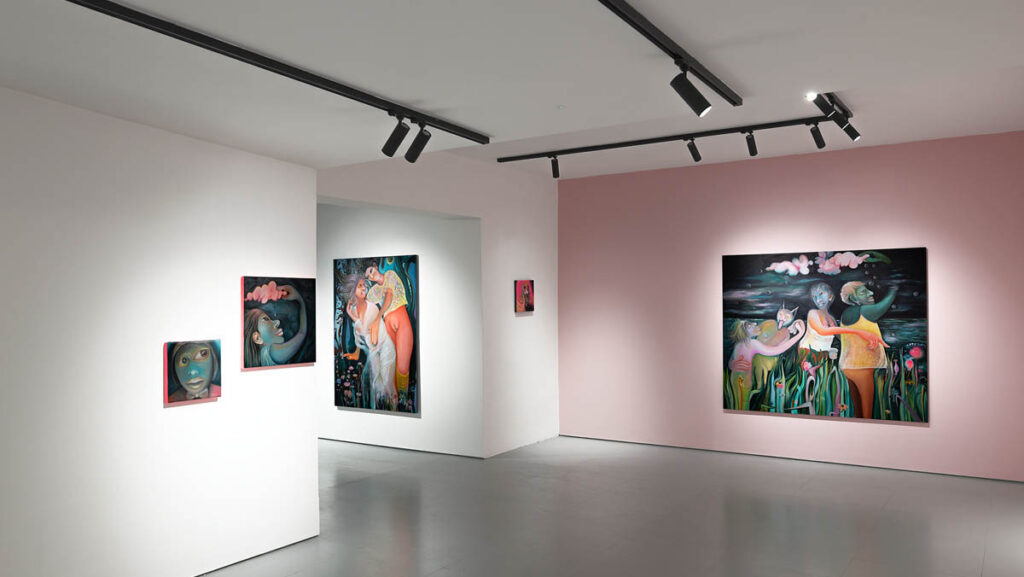
The topic of time is something very connected to your work over the last few years. Could you give us an insight into it?
I remember that even when I was in school, this topic of time was so present that it made me feel all kinds of ways. It was all about control, losing it, or never having it at all. In 2016, I made my first group of works with the title Four Seasons, and, since then, the idea of Four Seasons has been reappearing. With the cape sculpture in the OUSIA show, the idea about the seasons was developed further, and I also did a day, a week, and then the universe and the planets part of it. The topic of time evolved out of this process. I wrote an essay that accompanies the cape work after running onto the video that very closely explaining notions of time I was thinking about. The essay explains how the cape functions more closely. There is something in quantum physics that is like a surprise factor and unpredictability, but if that wouldn’t be, and everything would just be. There is no such thing as a definition of the past or future, but it is how we see and understand it in our heads. Maybe it is the same thing with ousia and time, because ousia is an essence of the fact that everything just is, without the definitions or words for that. It could be the same over time. It is hard to put it into words because no words exist that could describe this notion.

How did you come to the decision to use a sewing machine instead of a pen or brush?
One thing happens, then another, and suddenly I am doing something. I don’t do stuff consciously; I just think a lot about different things, and sometimes stuff comes back at the right moment. Already in my university days, I worked with jute fabric, made shirts out of it, and made up the labels for it. It started there, but in 2018 I started drawing on white shirts and hoodies, and I wore them, gifted them to friends, and I was in LA in 2019 and all the people wanted to buy one and have one. At that moment, I still didn’t have a way of painting so that the color would stay forever after washing. And then, a friend of mine Jojo got me in contact with this guy Chun who does embroidery in Vienna. I started sewing myself when I came up with an idea that was not easy to realize using this vector method for embroidery machines.
Your text that followed the exhibition, OUSIA, is very analytical; is your writing practice consistent, and does it also have the form of a diary or is it different?
I do write a lot, and all the time, I have stacks and stacks of papers with text at the studio and at home—all kinds of thoughts and ideas, sometimes just notes. Up until now, every few years, there have been periods where some of these words I wrote down started to make sense together. I wrote the text on OUSIA a year before the exhibition happened. I ran into a word explaining what I wanted to say for a while—something that interested me for a while—and it helped build up the final concept. It is interesting because I ran into the same word a couple of times after that again. The text I wrote on the occasion of the exhibition is not as abstract as my previous text might be, but more direct and full of visible references. I could only do this kind of writing when things were clear to me and made sense. I don’t know if stuff should always make sense, be completely understandable, and be full of conformity. After all, the art piece is there because sometimes there are no words to explain it fully; otherwise, it would be a text.
Flora Hauser – www.florahauser.com, www.instagram.com/florahauser/
Notes: This interview is part of our WallArt Journal #2, which we specially produced for the SPARK Art Fair 2024 in Vienna. You can find copies around Vienna, or if you want to have one, feel free to contact us.







